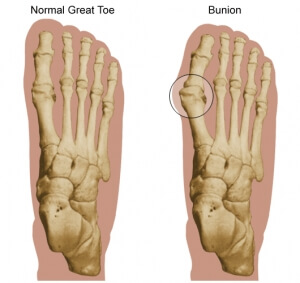When you are experiencing pain causing by plantar fasciitis, it is always best to come in to see us so we can assess the situation and provide the proper course of treatment. However, there are a few home remedies that can help in relieving your pain in the meantime.
- Cut back on your exercise routine. Exercise is a very common trigger of plantar fasciitis, so if you are an athlete, try cutting back on your routine. Decrease the number of miles you are running or the amount of time you are spending on the cardiovascular machines at the gym. This can make a huge difference in the amount of pain you are feeling. When in doubt, stop your exercise routine altogether until you come in to get assessed.
- Switch up your exercise routine. In addition to cutting down your routine, opt for lower-impact exercises to alleviate the stress on your feet. High-impact exercises such as running and aerobics put a lot of strain on your feet, which increases your heel pain, so avoid those types of exercises as much as possible. Instead, try activities such as swimming or an elliptical machine, which are both low-impact exercises that won't cause your heel pain to flare up.
- Stretch your arches. To help decrease the pain in your heel, get into the routine of performing simple stretches daily. These can be done in the comfort of your own home and don't take but a few minutes of your time. Stand and stretch your arch using the assistance of a household object or stretch your arch while sitting. Either option will help alleviate your pain.
- Ice your feet. Applying an ice pack to the bottom of your feet will help to decrease the inflammation caused by plantar fasciitis. You can perform this home remedy for 15 to 20 minutes 3 to 4 times daily. Another trick that works well is freezing water in a small paper cup. Once it's frozen, you can peel the lip of the cup away and massage your foot with the ice. This also is a great solution for shin splints.
- Stay off of your feet. We know how hard it is on a day-to-day basis to stay off of your feet, but this will really help the pain and inflammation caused by plantar fasciitis. Rest as much as possible and when you can, use a pillow to elevate your feet and relax.
- Massage with a golf ball. This may sound strange, but many patients have found the golf ball massage to be the best home remedy for their plantar fasciitis pain. Use the golf ball to massage the bottom of your foot, which stretches the plantar fascia and decreases adhesions in the area.
As mentioned before, none of these home remedies should take the place of a visit to our office. Every patients' case of plantar fasciitis is different and some may need more extensive treatment than those remedies offered above, but use these in the meantime to gain instant relief from your pain. Contact us today for an appointment.



 Bunions occur when the bone at the base of the big toe becomes misaligned, which causes the joint to move out of place.
Bunions occur when the bone at the base of the big toe becomes misaligned, which causes the joint to move out of place. 
